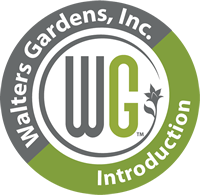Growing Temperature:
70-75° F days
55-65° F nights.
Soil PH:
5.8-6.5
EC (What is EC?):
2.0-3.5 pour through method
Fertility:
Needs 100-200 ppm fertilizer for optimal growth.
For Controlled Release or Slow Release Fertilizer, see your preferred supplier for recommended rates for incorporation or top dressing, as it varies by fertilizer.
Vernalization:
Not required for flowering, however larger plants with better branching and form will occur with vernalization.
Pests & Diseases:
Aphids are the primary insect pest.
Mildew can be problematic and typically presents as scabbing on sedum, preventative fungicide applications are recommended. Sedum can also succumb to crown rots caused by Fusarium and Rhizoctonia, and to stem rot (Colletotrichum).
Potting & Timing:
Some root trimming may be necessary at planting time to fit into the container.
Warm and slightly dry conditions after transplanting speeds rooting and growth.
Moisture:
For potting soil use professional planting media.
Avoid overwatering, extended periods of wet soil will be detrimental and may result in rot.
Planting Level:
Place crown just at or below soil level, plugs with tops at soil level.
PGRs/Pinching:
For plugs, one soft pinch a week after planting helps to encourage branching. A second pinch is optional. Ethephon (Florel) at 500 ppm is also effective at increasing branching. A Daminozide (B-Nine) and chlormequat chloride (Cycocel) tank mix sprayed at 2,000+1000 ppm or Uniconazole (Sumagic/Concise) at 5 ppm will control growth, however, the best growth control method is to grow plants dry.
Configure at 300-600 ppm sprayed 1-2x can increase lateral branching.
Growth regulator rates are suggestions but may vary due to time of year, region and water quality. Trialing is always recommended before applying to an entire crop.
Lighting:
Requires high light in production. In a very high light environment, such as Southern California, plants may need up to 30% shade to protect against sun scorch.
Sedum requires long days to flower. Once pea-sized buds are present plants can be moved to a short day environment, which can actually help to speed flowering and reduce flnal plant height.















